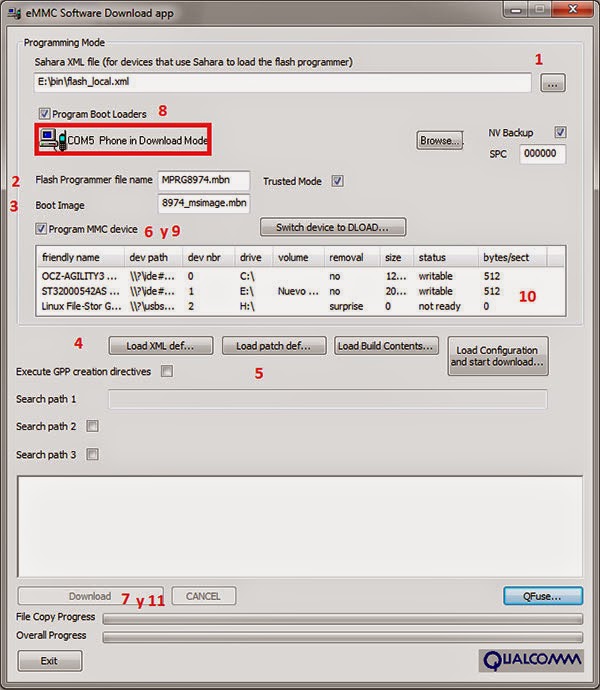

- Ram dump image using qpst configuration how to#
- Ram dump image using qpst configuration driver#
- Ram dump image using qpst configuration full#
- Ram dump image using qpst configuration series#
Start the QPST memory debug application (QPST 2.7.225 or later is needed) and connect the UE thru appropriate COM port.5. Reset the UE for the NV change to take effect.4. Set NV 4399 (DETECT_HW_RESET) = 1 -> This enables the UE to enter download mode when a reset is detected.3. Set NV 1027=1 -> This enables taking mDSP logs2.

Please follow the below steps for collecting RAM dumps along with mDSP logs:1. The UE has to be in download mode in order to collect RAM dumps using QPST.
Ram dump image using qpst configuration how to#
How to collect RAM dumps for UE reset/crash issue? How to collect RAM dumps without using JTAG?
Ram dump image using qpst configuration full#
There's also this U&L Q&A titled: How can I dump the full system memory? which has additional examples and information.How to collect RAM dumps using QPST memory debug/USB logging?
Ram dump image using qpst configuration driver#
This commercial memory forensics product ships with a modified version of the crash driver and a script for safely dumping memory using the original or modified driver on any given Linux system. On Linux, /proc/iomem exposes the correct address ranges to image, marked with "System RAM". Care must be taken to avoid addresses that are not RAM-backed. When the crash driver is modified, compiled, and loaded on other systems, the resulting memory access device is not safe to image in its entirety. This module can also be compiled for other Linux distributions with minor effort (see, for example, ). On Red Hat systems (and those running related distros such as Fedora or CentOS), the crash driver can be loaded to create pseudo-device /dev/crash for raw physical memory access (via command "modprobe crash"). See, for example, the message accompanying this patch.
Ram dump image using qpst configuration series#
Throughout the 2.6 series of the Linux kernel, the trend was to reduce direct access to memory via pseudo-device files. On other systems it may not be available at all. On recent Linux systems, however, /dev/mem provides access only to a restricted range of addresses, rather than the full physical memory of a system. On older Linux systems, the program dd can be used to read the contents of physical memory from the device file /dev/mem. From the Forensic's Wiki: Tools:Memory Imaging


 0 kommentar(er)
0 kommentar(er)
